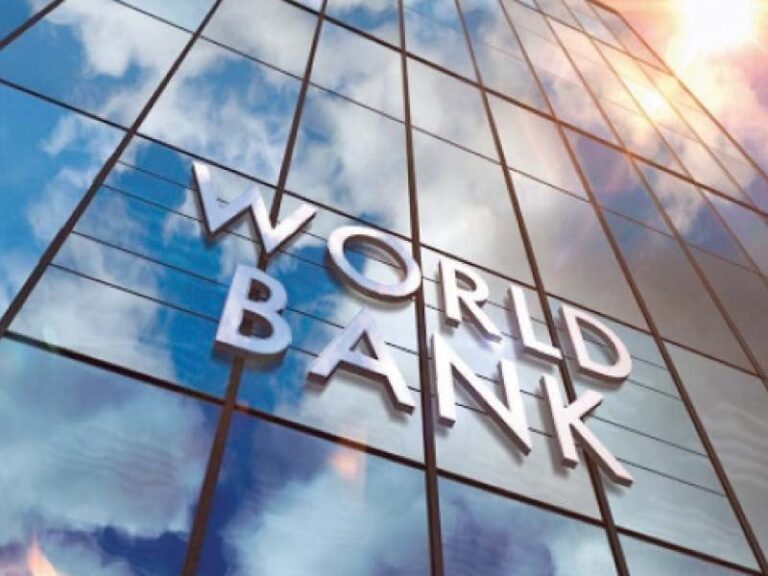ISLAMABAD:
The World Bank has adjusted upward the income levels in an effort to measure global poverty, which has also pushed the percentage of Pakistanis living in poverty by to 44.7% — an outcome that may not still be fully reflecting the harsh ground realities due to the use of seven years old survey data.
The Washington-based lender on Thursday released its new international poverty line to reflect changes in the prices of goods and services and their implications on the global population.
The new poverty line for Pakistan, which is a lower middle-income country, is set at $4.20 per person per day, up from $3.65, said Christina Wieser, the senior poverty economist of the World Bank while briefing the media persons here.
She said that due to the upward revision, for the lower middle income level, the poverty ratio has jumped from 39.8% of the old level to 44.7% on the threshold of $4.20 per day income.
The World Bank has also updated the extreme poverty line from $2.15 to $3 per person per day. Because of the revision in the threshold, 16.5% of the Pakistani population lives in extreme poverty, up from 4.9% under the previous $2.15 threshold, said Christina.
She said that one of the reasons for such a high jump was that the majority of the people were clustered around $2.15 to $3 per day income level, which resulted into a significant surge.
About 82% of this increase in extreme poverty is due to the higher value of the new international poverty line reflecting increases in the national poverty lines of comparator countries, with the rest explained by price increases in Pakistan between 2017 and 2021, according to the World Bank.
The World Bank has not used the latest population census data and instead relied on the United Nations population dataset.
Christina also added that the underlying Household Income and Expenditure Survey (HIES) 2018/19 data has been used for both national and international estimates. While international poverty lines are essential for tracking global progress and comparisons, national lines remain more appropriate for informing country-specific policy decisions, said the senior economist.
Anything that has affected since 2019 is not included in either Covid-19 or 2022 floods, as the baseline remains the same, said Christina while responding to a question. We are desperately looking forward to the new household integrated economic survey to update our baseline, she added.
The local economists had estimated a sharp rise in poverty after the 2022 floods, which inundated one-fourth of the country and adversely impacted populations in three provinces.
These updates to the international poverty lines ensure that poverty estimates remain accurate and comparable across countries. The methodology remains consistent with past updates, continuing a practice that began with the introduction of the dollar-a-day line in 1990, according to the World Bank economist.
“The revisions help position Pakistan’s poverty levels in a global context and underscore the importance of continued efforts to reduce vulnerability and improve resilience,” said Najy Benhassine, the outgoing World Bank Country Director for Pakistan.
For domestic policy and programme targeting, the national poverty line remains unchanged and continues to serve as the primary benchmark for assessing poverty within Pakistan, Christina said.
The forthcoming World Bank Poverty, Equity, and Resilience Assessment for Pakistan will provide critical context for interpreting these updated poverty estimates, she added. The report would offer a detailed update on poverty, inequality, and non-monetary outcomes, will investigate key drivers of poverty, and outline a forward-looking agenda to enhance prosperity and resilience for all Pakistanis.
According to the government’s last official available numbers, which are based on the 2018-19 survey, 21.9% of the population was living below the national poverty line. However, because national poverty lines differ widely, the resulting poverty rates are not comparable internationally.
The need for new international poverty lines arises from the evolving price levels and cost of basic needs across the world and within income groups, according to Christina Wieser.
To maintain accurate global comparisons, the World Bank periodically updates these poverty lines. International poverty estimates are based on the headcount of people with consumption below the international poverty line, defined in purchasing power parities (PPPs).
Pakistan is among the countries experiencing the largest changes in poverty when transitioning to the 2021 PPPs based on the Low-Income International Poverty Line, according to the World Bank.
The World Bank said that the international poverty line should be used only for cross-country comparison and analysis; for evaluating poverty in a particular country (Pakistan), the national poverty line remains the appropriate standard.
The revisions help position Pakistan’s poverty levels in a global context and underscore the importance of continued efforts to reduce vulnerability and improve resilience,
The new figures reflect updated international thresholds and improved data from other countries, not deterioration in living standards, according to Christina.

